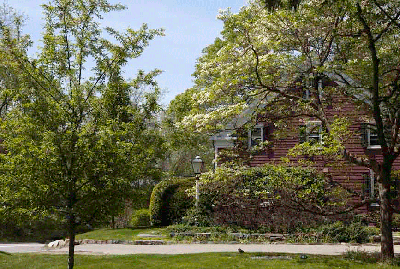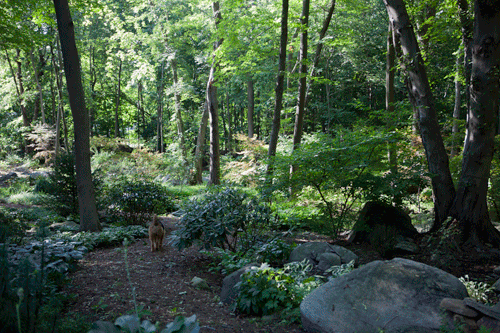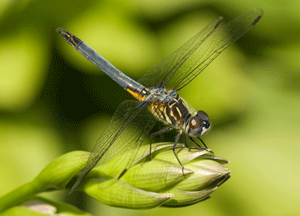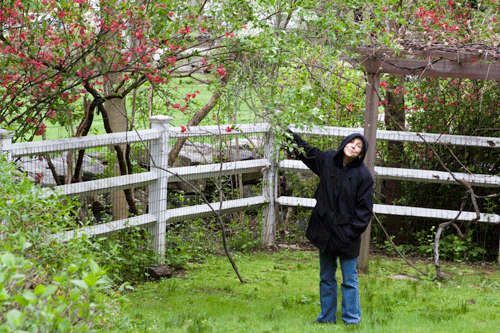Our House
 Our house was built in 1790, an old farmhouse that stands only a couple of yards from the road, where people situated houses in those days.
Our house was built in 1790, an old farmhouse that stands only a couple of yards from the road, where people situated houses in those days.
The road was dirt, just as most roads were, dating way back to antiquity, and it wasn't paved until the middle of the twentieth century.
There's no farm anymore. We own only about two acres, but we still have the most beautiful old stone walls. I don't know how the farmers farmed; the soil is rocky, and boulders jut up everywhere. One of them is shaped just like a chair—or a throne.
We still have the outhouse. You can read about it on the next tab.
Some of our trees are ancient too, mostly maple, taller than the house. We have an enormous old apple tree. The stump of the elm that succumbed to Dutch elm disease has sprouted new growth, so maybe it will rise again.

Peace reigns in our garden despite the cawing crows and the occasional woodpecker. The squirrels are quiet, and so is the rabbit that Baxter loves to chase. Sunlight slants between the sugar maples, the Japanese maples, the ash tree, the apple, the oaks. Earthworms push up their mounds on the path. Here and there in spring I see the striped Jack-in-the-Pulpit flower. In fall I see its bright red berries. All during the growing season I bend to sniff one flower or another. In February, I'm encouraged to see crocus shoots boring through the frozen earth. When I'm stuck for an idea, sometimes I come out and find it in the calm.
 David often photographs the flowers and the insect life. I swear the dragonflies actually pose!
David often photographs the flowers and the insect life. I swear the dragonflies actually pose!
The house itself is wood, painted red with white trim and green-black shutters that also date back to 1790. It's a cozy place—both low ceilings and small windows to conserve heat. The rooms circle a central chimney that vents four fireplaces. Next to the fireplace in the living room, which used to be the kitchen, is the beehive oven, lined with bricks and curving behind the fireplace. An eighteenth and nineteenth century farm wife would have cooked her pies, cakes, and roasts in there. No timers, no exact temperature regulators, and yet I bet some delicious meals resulted.

In most houses of this vintage the floors dip and sag, but our floors are flat even though the boards were there from the beginning. In 1946 a thirty-nine-year-old engineer named Irving Aschheim (there really are those two h's next to each other) bought the house and made the floors lie flat again. He also dug out a foundation, straightened the roof-line, and exposed some wooden beams. The beams as much as anything make you feel the house's age. They're notched all along their lengths, the notches put there by the carpenter to hold the plaster. Irv and his wife Ilse raised their two kids here and stayed until they sold it to us in 1993.

My office is on the second story (the top except for the attic), the smallest, coziest room in this cozy house. There's a bed, where I meditate, a desk, desk chair, two bookcases, and that's it. Above my desk hangs an original painting by my friend, the children's book illustrator Cor Hazelaar. It comes from her book called Zoo Dreams, and it shows a snoozing polar bear. To the left of my desk is a drawing of me snoozing when I was six or seven. The drawing was done by my older sister, Rani, who was a talented artist even at eleven or twelve years old, and you can see Rani's more recent paintings on her website. Over the bed is a photo David took of Baxter snoozing. Lot of sleeping going on while I'm trying to stay awake at my computer!
What else might you want to know? Old as it is, the house accommodates electricity and computers. The plumbing works, and the well is no longer hand-pumped from right outside the kitchen. We have no ghosts, which may disappoint. It's a cheery house. I think it likes modernity. In fact, I believe it wants to see several more centuries, and it will embrace its next owners as sweetly as it now embraces us.
